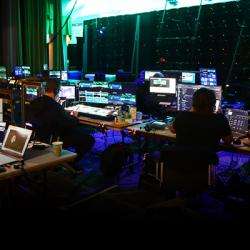4 Things I Wish I Knew When I Was a New Event Planner

Before working for IMS Technology Services, I was a freelance event planner. I started off planning for friends and family, which led to further connections and snowballed into a side job. It is an accomplishment I am very proud of because I learned from research, networking, hard work, and my own mistakes. It was through my love for the corporate event planning industry and my full-time job in sales that lead me to IMS Technology Services. The experience I have gained working for an audio visual company has given me a new perspective on the way a meeting should be planned. This knowledge would have saved me a lot of trouble during my first few years in events, so I have decided to share my 4 Tips planning your AV.
First, and possibly the most important, bring your AV provider in early!
This can save you a lot of work in advance. When you bring an AV provider in early in the planning process, they can not only help in choosing a venue that is easy to work with, but they can also help with negotiating against fees from the venue. It is so important to start these negotiations before any documents have been signed. This will also give your AV team the capability of drawing a room layout with their equipment in place. An important part of having them involved in the layout drawing is that the room should work with all of the technology and equipment they are planning. It is important there is enough room for all of the equipment, and once you have decided on the seating arrangements, they can include all of this in the drawing for you and the other vendors to use.
Second, know your video connections, microphones, and screens.
These could be considered three separate important tips, but I combine them because they all matter for the same reason; it leads to a smooth and effortless event. I won’t go into too much detail, because there are plenty of articles online about each piece of equipment and what they’re best used for.
Knowing what connections you need is important because your AV team needs to know what kind of adapters to bring and what kind of laptops your presenters can use. A few types of adapters you should familiarize yourself with are HDMI, DVI, DisplayPort, and VGA. Not having the right connection can lead to a failed presentation.
Not only should you know the different types of microphones, but what each type is best used for in an event. My suggestion would be to know your presenter: do they talk with their hands, do they pace, are they loud speakers? How they present will dictate which microphone is the best option. The type of event can also determine the right style of microphones. If you aren’t sure what the best option is, ask your AV partner what they would recommend. Types of microphones to consider: Handhelds, Wireless, Lav Mics, Podium Mics, and Pyle Pro Mics.
Make sure you know the aspect ratio of your presentation. If you have a widescreen presentation, make sure you have 16 x 9 screens. If you have a standard presentation, you need 4 x 3 screens. Check out the detailed explanation of the important differences in our AV 101: Industry Terms Explained article.
Third, always share your vision with your AV team.
They care about the success of the event as much as you do and they will dedicate everything they have to make that happen. The more information you can give your AV company about your event, the better the outcome. When you spend time discussing what is important to you, your team will be able to proactively work toward that goal.
Last, always make sure you are comparing apples to apples.
This may seem like an obvious statement, but often times two quotes can be so different that there is no way to actually compare the two. If you take the time to explain the event thoroughly to each AV provider you are considering, and make sure they are giving you comparable quotes, it gives you a better opportunity to choose the best option for your event. The cheapest option is not always the best option for your event.
Article written by Sarah Jacobs, IMS National Account Manager.
Share This Article
Categories
Latest Posts

Philadelphia 2026: Is Your Venue Ready for the Spotlight?

Scalable AV Infrastructure for Life Science Enterprises

Extend Your Reach: The Power of Virtual and Hybrid Events

Why Every Detail Matters in Investor and Year-End Meetings

IMS Technology Services Welcomes John Beaulieu
Tags
Contact Us
- Headquarters: 3055 MCCANN FARM DRIVE, GARNET VALLEY, PA 19060
- Event Staging: 2000 COLUMBIA AVENUE, SUITE 300, LINWOOD, PA 19061
- Southeast Office: 404 SUNPORT LANE, SUITE 350, ORLANDO, FL 32809
- Phone: + 610-361-1870
- Contact Us
Services
Recent Posts

Philadelphia 2026: Is Your Venue Ready for the Spotlight?

